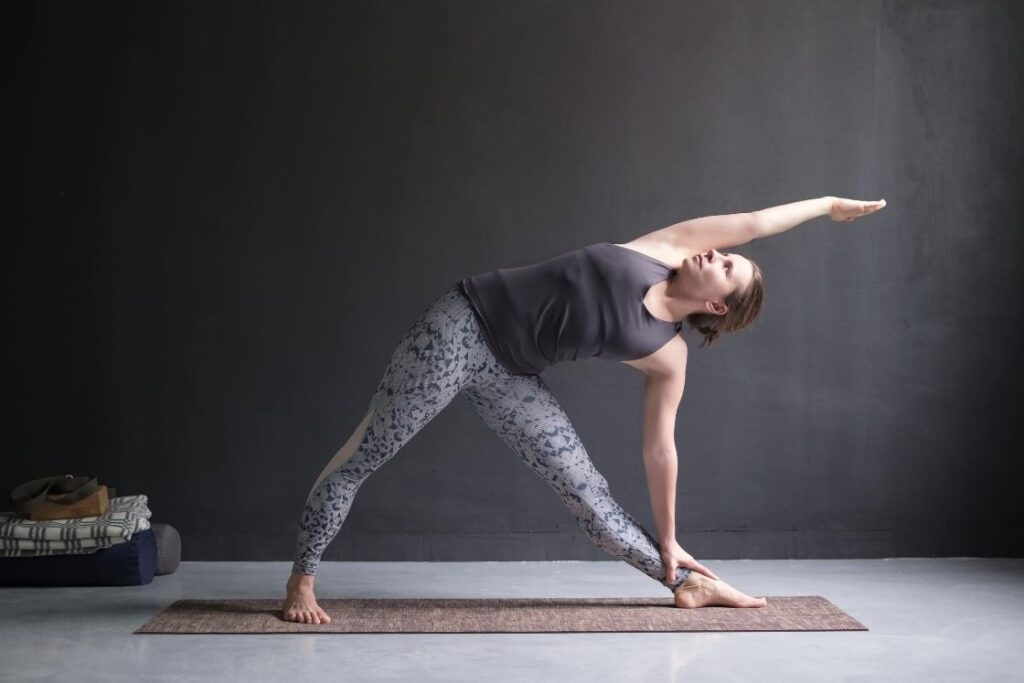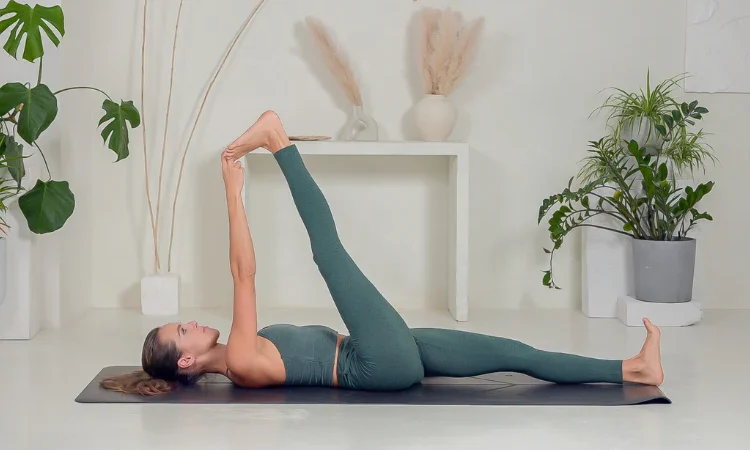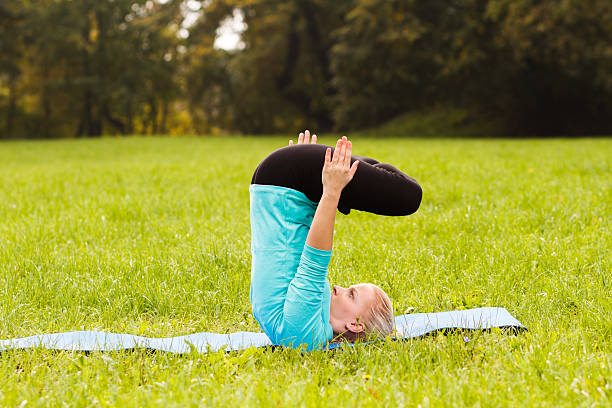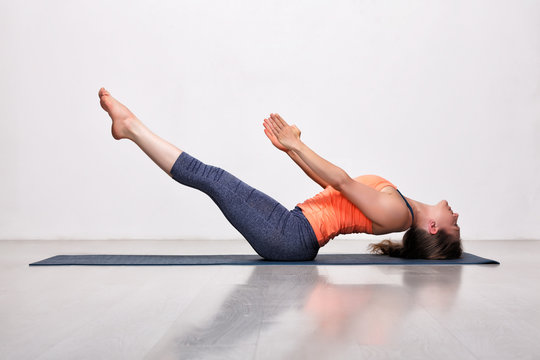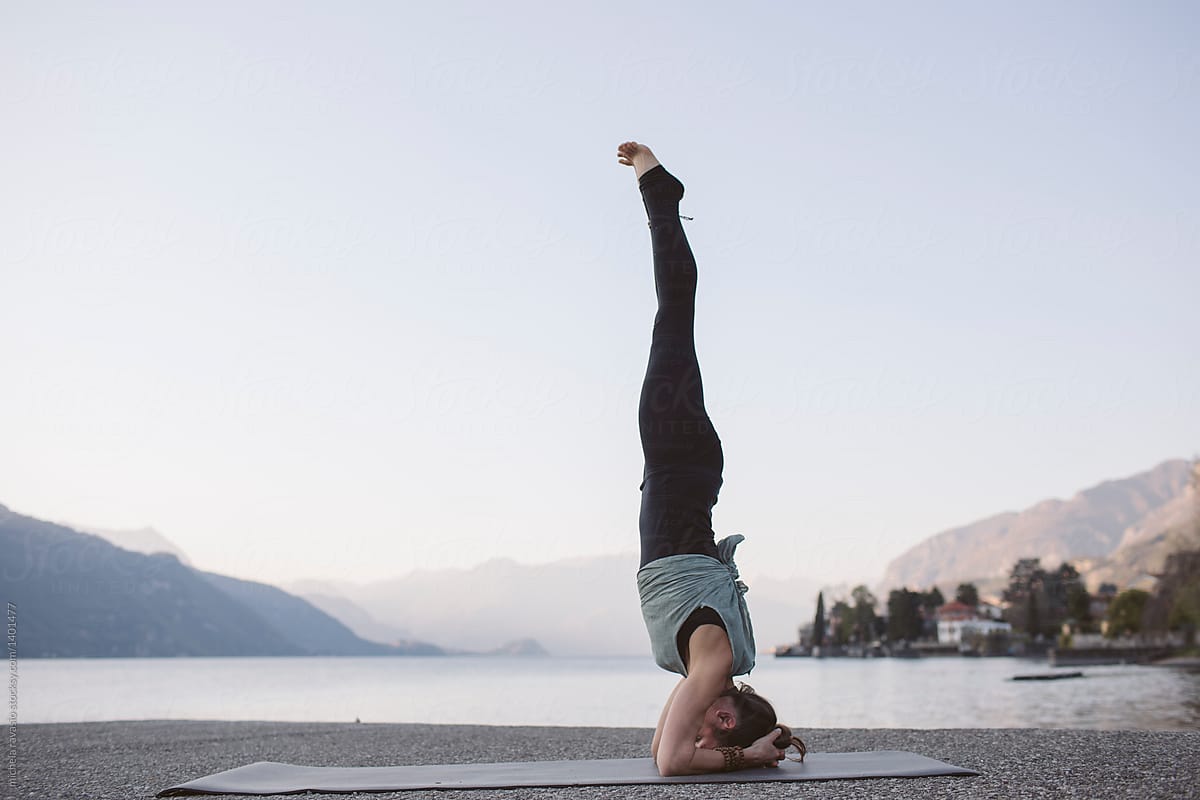Utthita Trikonasana, also known as the Extended Triangle Pose, is a classic standing posture in yoga that embodies the harmony of stability, strength, and flexibility. As one of the foundational poses in Hatha and Vinyasa yoga styles, it is commonly practiced to stretch the body, improve posture, and enhance physical balance.
Table of Contents
What Is Utthita Trikonasana?
The name is derived from the Sanskrit words:
- Utthita – extended
- Trikona – triangle
- Asana – pose or posture
The body forms a triangle shape in this pose, symbolizing the union of body, mind, and breath. Though it looks simple, Utthita Trikonasana requires a deep awareness of body alignment and breath control.
How to Do Utthita Trikonasana Step-by-Step Guide:
Here is a detailed breakdown of how to perform Utthita Trikonasana:
Step 1:
Begin in Tadasana (Mountain Pose), standing tall with feet together and arms by your sides. Take a deep breath and step your feet about 3 to 4 feet apart.
Step 2:
Raise both arms parallel to the ground, palms facing down. Turn your right foot 90 degrees outward so it points toward the front of your mat.
Slightly turn your left foot inward about 15 degrees. Align the right heel with the center of the left arch.
Step 3:
Inhale deeply. As you exhale, extend your torso to the right, reaching forward with your right arm.
Hinge from the hip (not the waist) and lower your right hand toward your shin, ankle, or the floor outside your right foot.
Stretch your left arm up toward the ceiling, in line with your shoulders. Keep both arms active.
Step 4:
Turn your head to look up at your left hand (or keep it neutral if you have neck issues). Ensure both legs are straight and the thighs engaged.
Your torso should be in one plane—imagine your body sandwiched between two glass panes.
Step 5:
Hold the pose for 30 seconds to 1 minute, breathing deeply. Inhale to come up by pressing into your back heel and lifting through the left arm. Switch sides and repeat on the left.
Benefits of Utthita Trikonasana:
Improves Flexibility:
Stretches the hamstrings, groins, hips, spine, and chest. Regular practice helps increase flexibility in the legs and hips.
Strengthens the Legs and Core:
Engages the thighs, knees, calves, and ankles. Activates the obliques and abdominal muscles, improving core strength and stability.
Enhances Balance and Posture:
Encourages alignment and balance across both sides of the body. Strengthens the spine and improves posture by reducing slouching.
Opens the Chest and Shoulders:
Expands the chest and helps improve lung capacity. Useful for people with mild backaches and those who sit for long hours.
Stimulates Abdominal Organs:
Improves digestion and helps tone the abdominal area. Stimulates the kidneys, liver, and spleen.
Reduces Stress and Anxiety:
The combination of deep breathing and a grounded body can help calm the nervous system. Encourages mindfulness and mental clarity.
Precautions and Contraindications:
While Utthita Trikonasana is generally safe, certain precautions should be observed. Avoid if you have:
- Recent injuries in the knees, hips, or shoulders
- Severe neck or back pain
- Low blood pressure or migraines
- Neck Issues: Keep the gaze forward or down rather than up toward the raised arm.
- Pregnant Women: Can modify with props or practice under supervision.
- Use a yoga block under the lower hand if you can’t reach the floor without straining.
Tips for Beginners:
- Use Props: Place a block under your lower hand for better support.
- Don’t Overreach: Avoid collapsing the torso to reach the floor; prioritize alignment.
- Wall Support: Practice against a wall to learn correct body alignment.
- Engage Muscles: Keep both legs strong and engaged, especially the thighs.
Common Mistakes to Avoid:
- Twisting the torso forward instead of keeping it open and aligned.
- Locking the front knee – always keep a micro-bend if needed.
- Letting the back hip drop forward – keep it in line with the shoulders.
- Reaching for the floor and compromising form – the goal is alignment, not depth.
FAQs:
Q. Is Utthita Trikonasana suitable for beginners?
A. Yes, it is a beginner-friendly pose, especially with the use of props like blocks and wall support. Just focus on alignment rather than how deep you go.
Q. What muscles does Trikonasana work?
A. It primarily works the hamstrings, calves, quadriceps, hips, spine, shoulders, and obliques.
Q. How long should I hold the pose?
A. Start with 20-30 seconds and gradually increase up to 1 minute on each side, depending on your comfort and strength.
Q. Can Trikonasana help with weight loss?
A. Indirectly, yes. It helps strengthen and tone the core and legs, improves digestion, and promotes overall balance and body awareness.
Q. Can it relieve back pain?
A. Yes, mild to moderate back pain may be relieved with proper alignment in this pose. However, people with serious spinal conditions should consult a professional first.
Conclusion:
Utthita Trikonasana (Extended Triangle Pose) is much more than a stretch—it’s a dynamic asana that builds strength, balance, and inner awareness. By aligning the body and engaging key muscle groups, this pose creates a sense of grounding and expansion at the same time. With regular practice and mindful breathing, Utthita Trikonasana can become a powerful tool in your yoga journey, offering both physical benefits and mental clarity.

